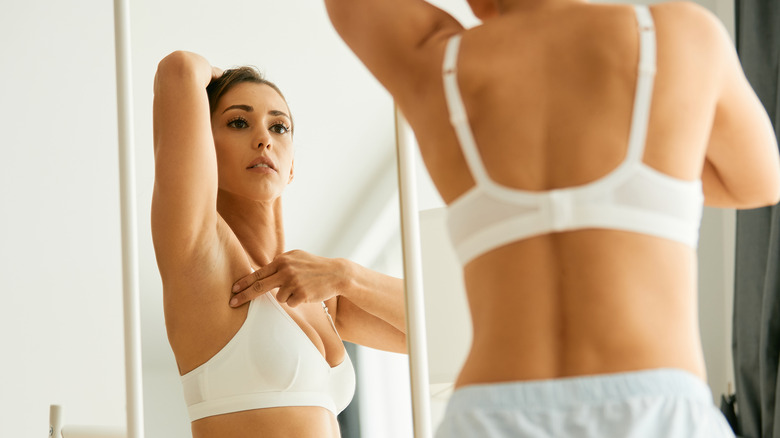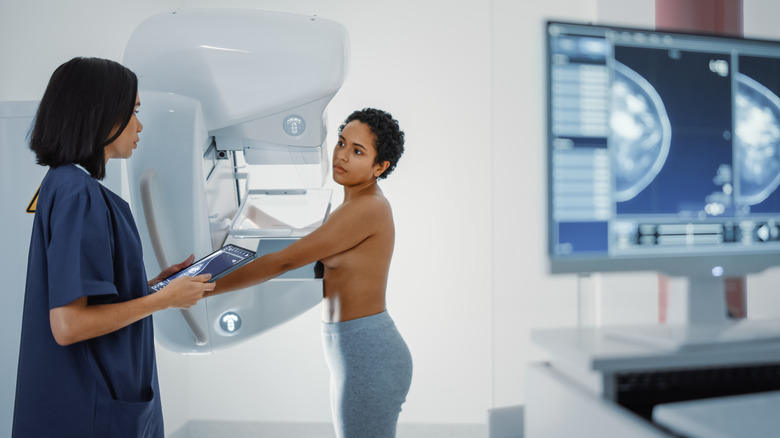How Old Should You Be For Your First Mammogram?
The thought of a potential cancer diagnosis is never something you want at the forefront of your mind, especially when you feel young and healthy. However, as unpleasant as it is, prioritizing checkups with your doctor is one of the best things you can do for your long-term health.
In the United States, breast cancer is one of the leading cancer diagnoses in women, and there is still a problematic racial divide regarding breast cancer mortality. With growing awareness and funding, survival rates have increased overall because of the improvements in treatment. Plus, identifying breast cancer early can give patients many more options for how they want to proceed. Since breast cancer occurs in the breast tissue due to a variation in cell growth, being proactive about identifying these cancerous cells is imperative.
Once women turn 20, it's recommended that they start examining their breasts themselves by feeling for lumps. Women should continue this practice monthly, regardless of what stage of life they are in. However, self-breast exams are not the same as mammograms and should not replace exams by your doctor.
Don't skip your mammogram
Mammograms are not typically recommended for women in their 20s or 30s unless there is a medical history of breast cancer that runs in the family or a lump is felt. This is largely why self-exams are encouraged for this age group. It is easier to identify any changes in your breast tissue if you know how they normally feel and are familiar with your body.
The American Cancer Society provides guidelines for women seeking mammograms based on their age. While women in their early 40s have the option to get a yearly mammogram if they would like, it is something women ages 45 to 54 should definitely do annually. As women age over 55, they can choose between yearly exams or opt to get a mammogram every other year.
As the CDC notes, the chance of getting breast cancer becomes more common as women age, with most being diagnosed over 50 years old. Therefore, choosing the more frequent screening option as you age may provide more peace of mind.
Why are screenings important?
It is important to understand what a mammogram is in order to see it as a necessity. Since a mammogram is an X-ray image of your breast, it has the ability to detect cancer several years before a lump would be able to be felt. Therefore, feeling for lumps yourself and then skipping your exam could be very dangerous. It's understandable if a breast cancer screening sounds uncomfortable since you may not know what to expect. Typically, you will stand in front of an X-ray machine without a shirt on, while your breast gets pressed by plastic plates from above and below. The images taken during this time have the ability to detect early cancer cells, so normalizing these appointments and making them a priority is essential.
Knowing what puts you at a higher risk of developing breast cancer is also important, as it could inform some of the medical decisions you make. While aging, family history, or denser breasts can all increase your risk, these factors are largely out of your control. On the other hand, living a sedentary lifestyle and not walking daily, drinking alcohol, or taking hormones have also been linked to increased breast cancer risk.
At the end of the day, knowledge is power and can help you make informed decisions about your health. So, if you are concerned about your own risk factors, or are in the age range for a mammogram, discussing the next steps with your doctor is pivotal.


